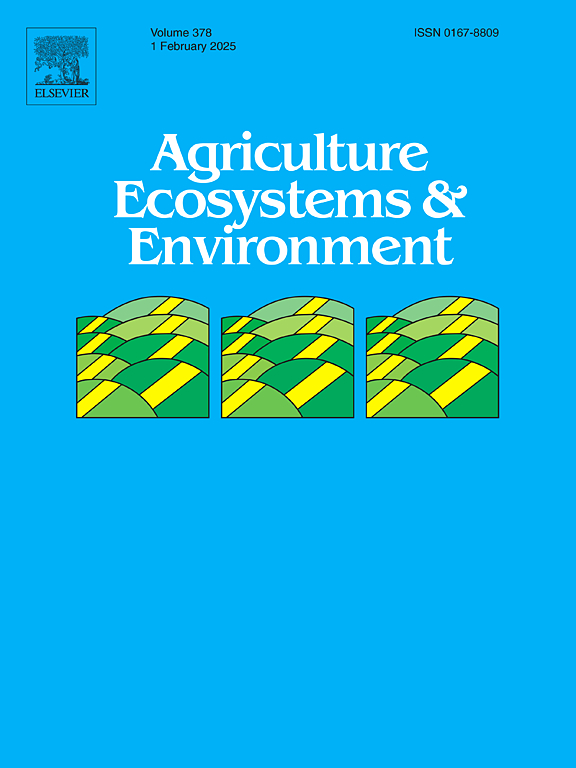The effect of agronomic filters on arable plant communities: What weeds are we selecting for?
IF 6
1区 农林科学
Q1 AGRICULTURE, MULTIDISCIPLINARY
引用次数: 0
Abstract
Functional diversity in arable plant communities affects their detriment, as different arable plants occupy different niche spaces which dictate their competitiveness to the crop. This functional diversity can be examined using Grime’s CSR triangle; most common arable plants are thought to occupy a region of this triangle indicating low levels of stress tolerance, and preference for disturbance and abundant nutrition. Prior research has, however, only examined this with regard to specific management practices or cropping systems, rather than the ecological conditions they generate, the ‘agronomic filters’ applied. Using a dataset of all arable plant species in Sweden, we used multivariate statistics to determine the functional characteristics of problematic weeds, and how they differed from other plant species present in these communities. This was examined with regard to Grime’s life strategy, perceived detriment, conservation status, and preference for agronomic filters relating to nutrition, disturbance, moisture, and light. Our results show that intense agronomic management constrains the niche and limits the function of the non-crop community, with stress-tolerators (S) being absent and, as theorised, competitive and pure ruderals (CR and R respectively) overrepresented. CR strategists favoured nutrition, light and disturbance, and were often considered problematic according to agronomic experts. R strategists generally showed less preference for nutrition, and were more often considered rare and non-weedy, probably due to their lesser competitiveness. These findings can be applied by modifying the agronomic filters favoured by problematic weeds. Specifically, more effective nutrient management would break the ‘agronomic trap’ of fertilisation benefitting dominant, competitive weeds. Increased grazing or mowing is also suggested to limit plant height in favour of less competitive species, and increased cropping diversity will also alter selection for agronomic filters depending on crop niche. Using these agronomic filters, we provide a theoretical guide to achieving ecological weed management in practice.
求助全文
约1分钟内获得全文
求助全文
来源期刊

Agriculture, Ecosystems & Environment
环境科学-环境科学
CiteScore
11.70
自引率
9.10%
发文量
392
审稿时长
26 days
期刊介绍:
Agriculture, Ecosystems and Environment publishes scientific articles dealing with the interface between agroecosystems and the natural environment, specifically how agriculture influences the environment and how changes in that environment impact agroecosystems. Preference is given to papers from experimental and observational research at the field, system or landscape level, from studies that enhance our understanding of processes using data-based biophysical modelling, and papers that bridge scientific disciplines and integrate knowledge. All papers should be placed in an international or wide comparative context.
 求助内容:
求助内容: 应助结果提醒方式:
应助结果提醒方式:


